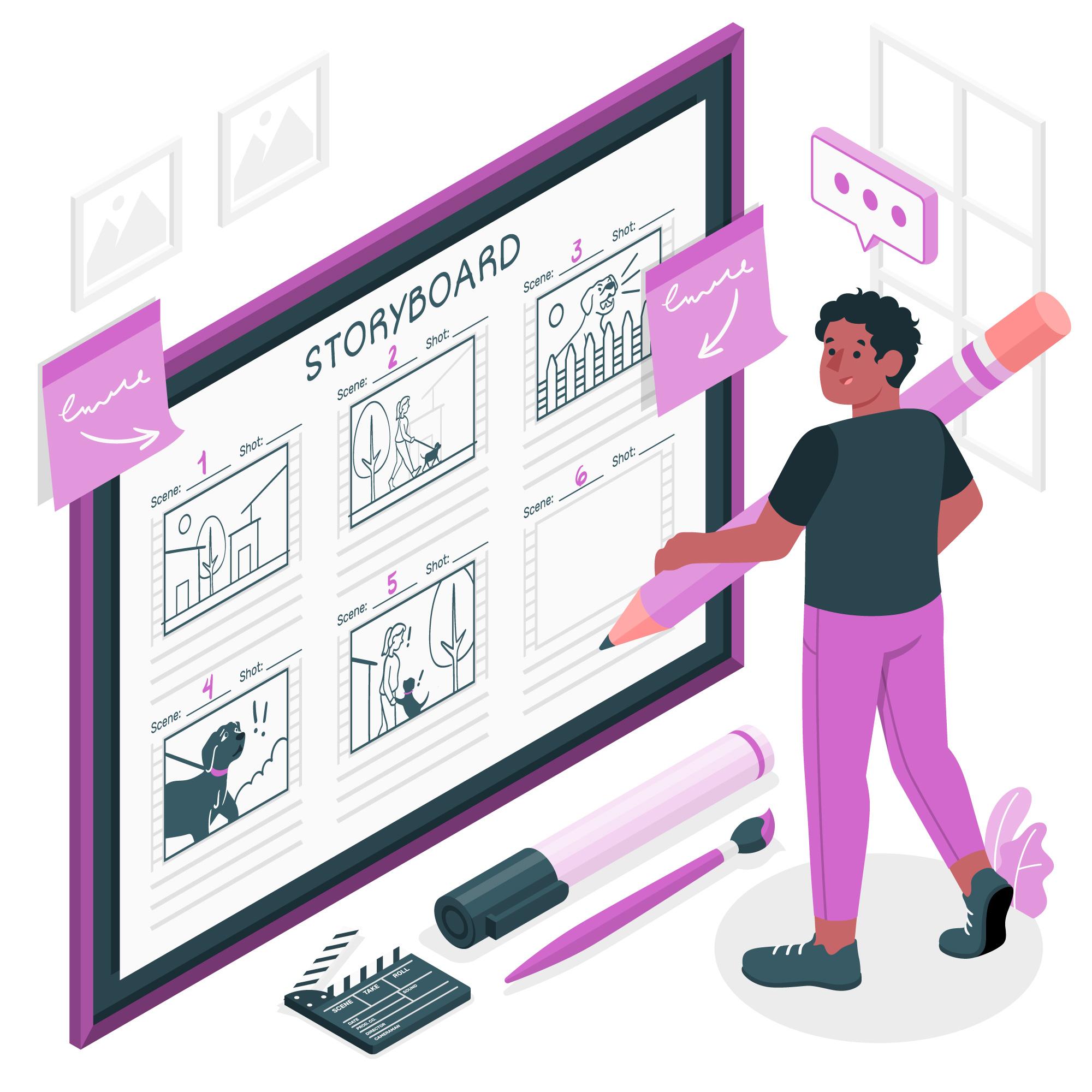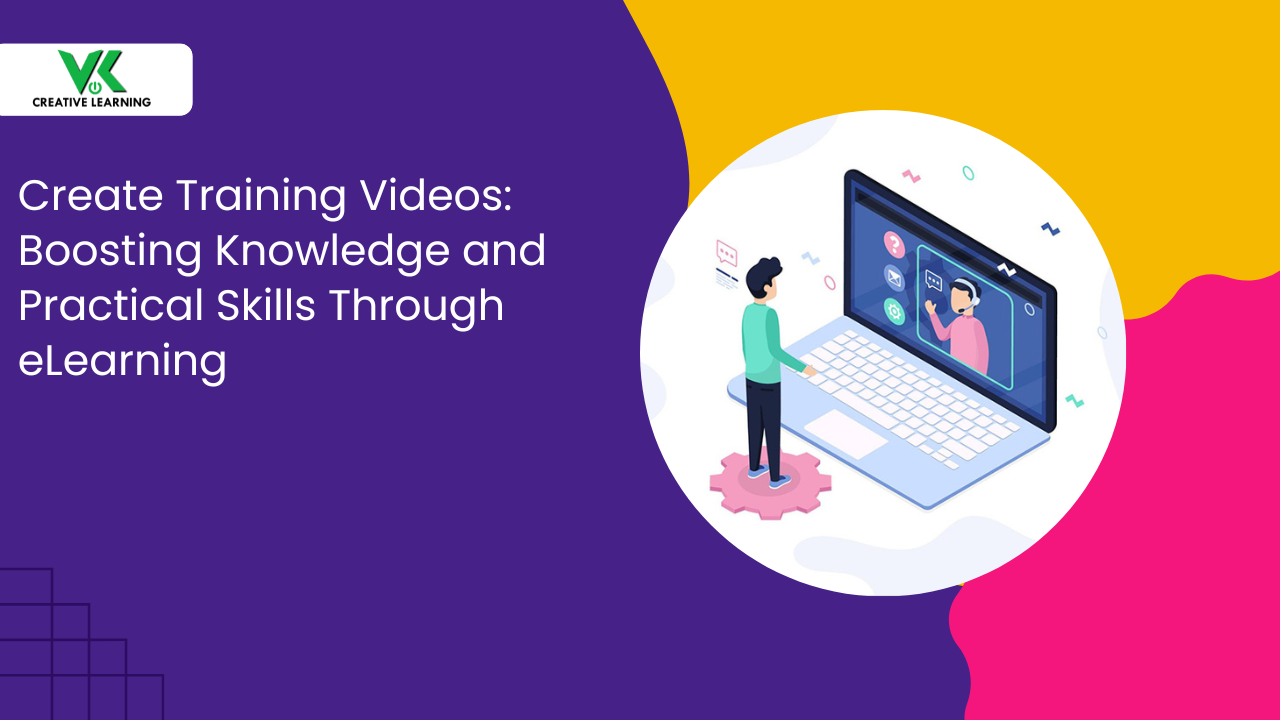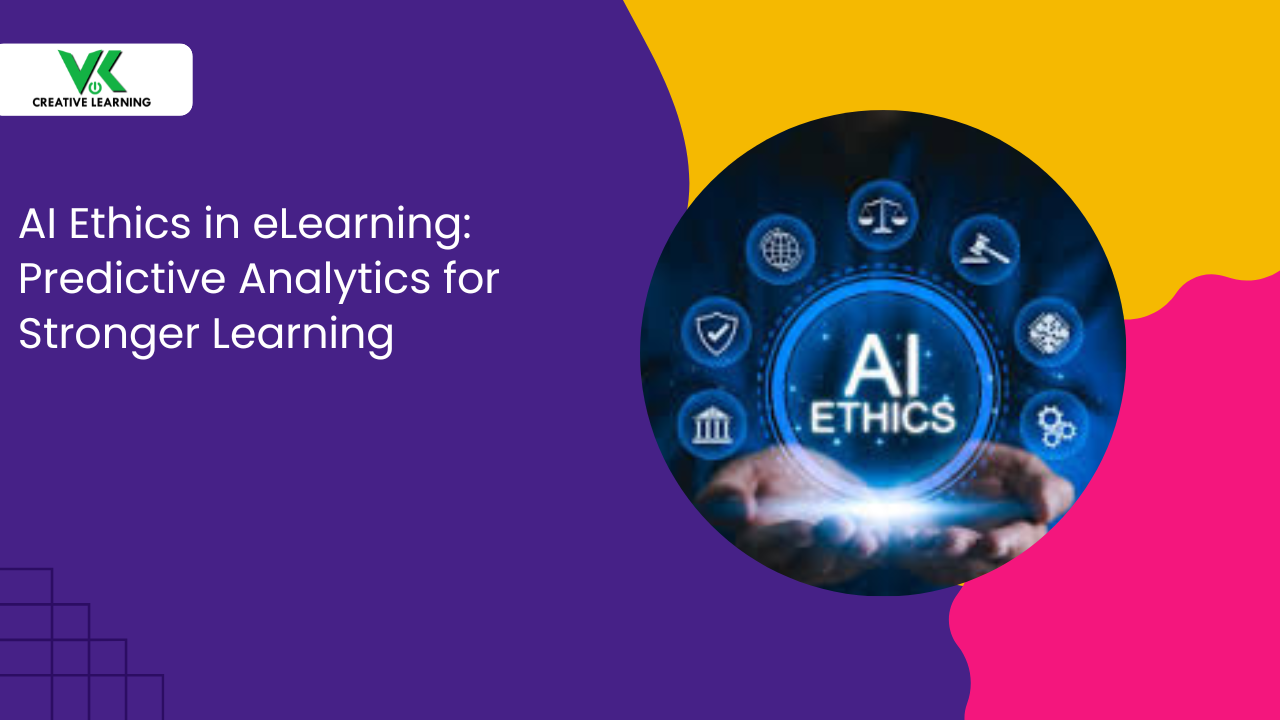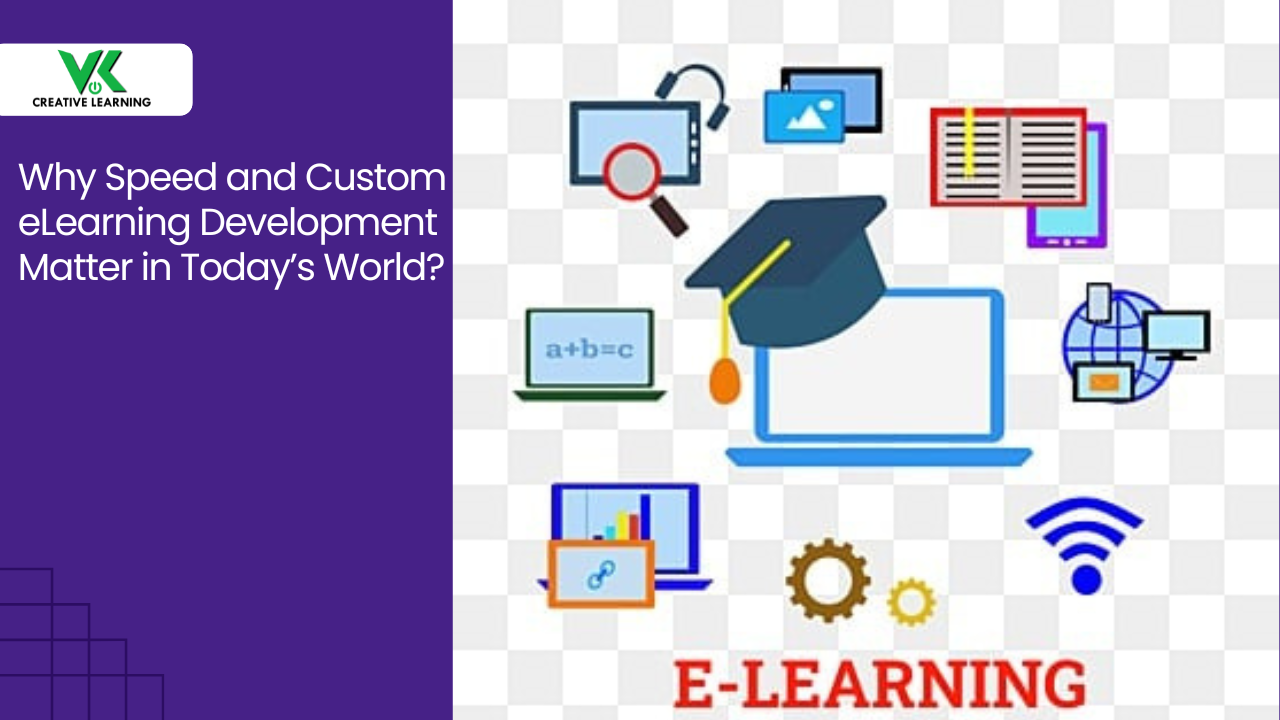Why E-Learning Instructional Design Storyboard with Examples for Training and Educational Teaching?
February 15, 2025
Of late, it has been observed that e-Learning instructional design storyboards with examples have stepped up the learning game. This has happened as they have structured, engaging content, layouts, and interfaces.
Thus, a storyboard in e-learning serves with interactive elements and assessments serve to provide clarity while learning along with outlined lessons.
Importantly, e-learning storyboard examples instructional design ensures that training is well-aligned with what the learners need. Thus, it helps them to gear up the learners for success and plays a big role in meeting goals. This becomes possible as it irons out the understanding of problems by offering visual explanations of tough details.
As an example, let us consider chemical industries, an e-learning storyboard instructional design can have examples based on chemical safety (safety data sheets, PPE, handling).
Finally, e-learning development companies such as VK Creative Learning can transform ideas that educational institutes or companies have in their consideration into structured e-learning courses.
This structure is implemented by eLearning content providers utilizing instructional designs based on storyboard format and animated examples.
They ensure simplification of the learning process in multiple ways -- courtesy of instructional designs -- 3D explainer videos, quizzes, and other elements. This aids in the overall knowledge-intake process and adheres to the audience's needs.
Further, we shall learn more about them in the subsequent sections -- right from what e-learning instructional design with examples is to benefits.
• Features of E-learning storyboard instructional design examples
• Content Structure Problems and E-learning Storyboard as Solution
- Disorganized Content Delivery
- Team Communication Breakdown
- Overwhelming Learners with Information Overload
• Benefits of E-Learning Instructional Design Storyboard with Examples
- Increased Development Time and Costs
- Inability to Meet Audience Needs
- Reduced Engagement and Interactivity
- Difficulty in Measuring Learning Outcomes
- Visual Learning Power
- Diverse Learning Approaches
- Simplified Course Creation
Features of E-learning storyboard instructional design examples
An e-learning storyboard would not only outline visuals but also provide animations with explanations and multiple examples. Quizzes are also provided to ensure the reinforcement of crucial measures and safety protocols.
This way the whole content has organized planning that aids in the systematic and properly structured delivery of content.
Furthermore, what makes this form of content delivery so impactful is its simplicity and focus on areas where the learners really need help. In a way, it creates a roadmap for the learning journey and interactive aspects play a major role in the same.
Instructional design storyboards with examples are adaptable for multiple industries – be it for education or training purposes. Its adaptability feature makes it more popular, branching out to different fields.
Above all, e-learning with storyboard designs chunks down complex information and topics into digestible lessons -- simplification of content.
With multiple examples, learners are also prepared for real-world challenges as they get acquainted with actual life instances. Thus, practical experience can be gained from real-life examples which would further aid in skill growth (decision-making, adaptability, problem-solving.
Otherwise, only knowing theories without knowing their implementation isn't enough; it's like a shallow well or having a map but not going on a trip.
Thus, for knowledge-gathering purposes, e-learning with storyboard designs and examples will assist to connect the dots -- bridging the gaps between books and the real world. This way learning becomes interesting, engrossing, and fun; making understanding easy and smooth.
Content Structure Problems and E-learning Storyboard as Solution
Disorganized Content Delivery
Without storyboards, lessons jump between multiple topics, and importantly, content often lacks clear direction. Result: this can confuse learners (no aligned topics with structure).
For instance, corporate compliance-based courses (rules, regulations, laws) might skip important aspects.
Hence, top eLearning content providers, implement storyboards that serve as roadmaps. This also takes care of logical and smoothing sequencing (organized flow of topics).
Moreover, storyboard instructional design with examples provides a clear route, and hence, content flow falls into the right places. Ultimately, this not only improves understanding but also ensures smooth learning.
Team Communication Breakdown
E-learning teams, be they designers, developers, or experts, often can misinterpret content. They may also fail to comprehend another department’s workflow.
For example, confusion may be caused if developers misunderstand designers’ vision (artistic view, creative concept, design idea). This may lead to unnecessary revisions owing to one department’s inability to understand the other.
With storyboards included with real-life examples, this lack of connection can be taken care of. This would help to reduce conflict and better collaboration -- everyone on the same boat.
Overwhelming Learners with Information Overload
Learners right from students to trainees to participants may feel overwhelmed if the content lacks clarity. In other words, if the content contains poorly presented information.
The consequence may be highly discouraging: learning will be difficult, and reduced retention.
For instance, think of financial analysis modules or scientific theories, swamped with formulas, equations, and calculations. Won’t such excessive information with crammed complex formulas burden the knowledge-gainers?
However, when e-learning content providers include storyboard modules of small size, it may augur well with learners. This is because content (manageable learning portions) becomes digestible for them. Content is up to the point and redundant complex information is converted into something easy to assimilate.
Benefits of E-Learning Instructional Design Storyboard with Examples
Increased Development Time and Costs
A big problem in learning comes when there is unstructured content development. This turns out to be a waste of time as well as resources (money, effort, materials).
Hence, top eLearning content providers may create e-learning storyboards with examples only to avoid rework and misalignment with goals. Result: no time is wasted, and efficacious use of content can be made.
To understand this situation, consider the usual safety training courses (containing tons of protocols, procedures, and guidelines). This would, obviously, mean discarded iterations -- no curation of final content; hence, money is wasted.
With instructional design storyboard examples, upfront organizing ideas becomes possible (planning and structuring content beforehand).
Inability to Meet Audience Needs
What can lead to meet audience expectations is unplanned courses -- a major factor in creating disinterest.
For example, usual learning materials (books or online courses) may lack attention-grabbing visuals. Therefore, what this may lead to is creating disengagement among children.
However with storyboard-based content based on the concept of customization and adaptability, learning material will suit different demographics. This would include factors such as age, culture, and background; enhancing impact. In other words, what we have is targeted content delivery with special attention to audiences’ learning needs.
Reduced Engagement and Interactivity
Without storyboards, conventional courses end up lacking the necessary appealing elements (quizzes, videos, animations). So, certainly, the learning content becomes interest-draining.
Example: data analytics online courses (charts, graphs, statistics) may entirely be based on text without multiple examples. Consequently, learners may not grasp concepts and feel bored.
With storyboard-based instructional design, what comes as a bonus are storyboard examples and interactive elements, encouraging user participation. In addition, these elements also end up boosting learners' involvement.
Difficulty in Measuring Learning Outcomes
Another problem with ordinary learning materials: unclear learning objectives for measuring success (performance-based). For instance, professional development courses (measuring skills) may fail to measure progress.
E-learning storyboards can align objectives with activities and make outcomes measurable; thus, results are seen. Importantly, goals are clearly defined, and assessments can be accordingly fine-tuned.
Visual Learning Power
With e-learning-based storyboards, it becomes possible to neatly organize content. This helps in boosting retention (information, complex knowledge). Distinguishing aspects: visuals and scenarios that include multiple pictures, detailed scenes, and background settings.
Consider training on safety protocols (workplace safety education). The eLearning content providers create content with interactive elements such that they will be able to reinforce key concepts.
This measure will ensure that safety concepts stick in mind. Subsequently, owing to the use of a structured approach (organized information layout), learners will be able to sink in information quickly. Also, they will retain the regulations and protocols for a longer time -- recalling becomes fast.
Diverse Learning Approaches
It is important to keep content appealing for people with diverse learning styles (visual, auditory, kinesthetic). Reason: different types of learners assimilate information in their own way -- depends on learning style and pace.
This is where storyboard instructional design with examples containing interactive 2D videos, and elaborate text can prove useful. They help to increase learning involvement and explore more about various topics.
For instance, e-learning-based manufacturing courses will contain storyboards that will blend diagrams along with step-by-step tutorials. This will work for individuals preferring their own learning style.
Consequently, the combo measure suits all learning styles and aids in maximum comprehension. Besides, this type of adaptable procedure will be suitable to bring in an inclusive culture.
Simplified Course Creation
Storyboards not only play a major role in simplifying the content development process but also speed it up. The best example of this can be: an environmental science course (think of ecology, biology education). With the inclusion of outlined visuals, elaborate text, and multiple quizzes, learning turns streamlined for knowledge gainers.
Conclusion
E-learning instructional design storyboard examples transform complex ideas into engaging content. They ensure structure, clarity, and consistency in training and education.
Companies like VK Creative Learning (VKCL) can craft tailored storyboards for impactful learning. Their expertise ensures courses meet objectives, engage learners, and drive results effectively.




